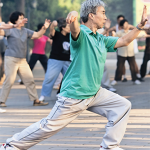
Living Well with Rheumatic Disease: Exercise
It’s estimated that more than 12 million American adults live with inflammatory rheumatic diseases.
Exercising can help rheumatology patients decrease pain and reduce disease symptoms, and can make a substantial contribution to overall flexibility. Plus, it will improve their mental outlook. People with arthritis should be encouraged to speak to their rheumatologist about the benefits of physical activity.
Ask patients to pick a group of exercises that contribute to improved fitness and strength. There are various activities that can be included in an exercise program, such as walking, water aerobics, bicycling, or dancing. Patients can join friends, take along a book on tape, or just get going. The trick is getting started and developing a routine. If the exercise path is strenuous, patients should consult with their physician before starting.
Rheumatology health professionals can help patients learn more about exercise and rheumatic disease, medications, and related topics by providing access to ACR Patient Fact Sheets, which can be downloaded by visiting www.rheumatology.org and clicking on Patient Resources under Popular Content.
Here is an excerpt from the Patient Fact Sheet on Exercise and Arthritis.
Fast Facts
- Physical activity is made up of daily tasks, both occupational and leisure activities that are usually affected by arthritis. Exercise or planned physical activity then becomes that much more important.
- People with arthritis who exercise regularly have less pain, more energy, improved sleep, and better day-to-day function.
- Starting off slowly with a few, low-intensity exercises will help to ensure a safe and successful exercise program.
Physically active individuals are healthier, happier, and live longer than those who are inactive and unfit. This is especially true for people with arthritis. Yet, arthritis is one of the most common reasons people give for limiting physical activity and recreational pursuits. Inactivity, in addition to arthritis-related problems, can result in a variety of health risks, including type II diabetes, cardiovascular disease, and osteoporosis.
In addition, decreased pain tolerance, weak muscles, stiff joints, and poor balance common to many forms of arthritis can be made worse by inactivity. For many older people with arthritis, joint and muscle changes due to aging can make matters worse. Therefore, for the person with arthritis, the right kind of exercise is very important.
How to Get Started
Starting a regular exercise program can be very challenging. Understanding the benefits of exercise for people with arthritis and having the support and guidance from your rheumatologist will help. Physical and occupational therapists can suggest exercises that are safe and customized to your specific needs, teach you how to monitor your body’s response to exercise, and modify your exercise routine as needed.


